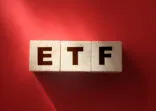China’s currency, the yuan, or RMB, may be set for a steep devaluation. As capital outflows continue in the mainland, Chinese authorities are further depleting foreign reserves by buying RMB and selling dollars.
In addition, Chinese authorties are trying to run an independent monetary policy with a pegged exchange rate. That is the same contradictory strategy that caused the Asian financial crisis in the late 1990s, according to Schroders, one of several firms warning that a sharp devaluation of China’s currency is very likely imminent.
However, China recently announced it would open its interbank bond market to nearly foreign investors.
In the short-term, the move could help slow capital outflow and ease RMB depreciation pressures that have been building over the last few months, said Luke Ng, FE Advisory’s vice president of research.
“It will take time for foreign investors to prepare and add exposure to mainland bonds, but with higher onshore bond supply expected in 2016, any additional demand from foreign investors could help provide support to bond prices,” Ng said.
In this context, FSA compares two mainland bond funds — the Bosera RMB Bond Fund and the ChinaAMC Select RMB Bond Fund.
Ng provides the comparative analysis.
Investment strategy

Both Bosera RMB Bond and ChinaAMC Select RMB Bond are Hong Kong-domiciled unit trusts that launched in February 2012, just after the implementation of the RQFII program at the end of 2011.
Both funds are managed by the Hong Kong subsidiaries of China-based Bosera and ChinaAMC. The funds primarily invest in onshore fixed income instruments in China via the RQFII program.
Bosera has a strong framework in place to guide the investment process, Ng said.
“Based on the macro, policy and capital flow analysis of the team, Bosera will form the top-down views in terms of asset allocation and duration management via a voting system. And in bottom-up selection, the research team will recommend and rate investment candidates in consideration of liquidity and credit quality.”
The portfolio manager works independently from the team. However, whe constructing the portfolio, guidelines are in place to prevent major deviation from the team’s views.
Similar to Bosera, the manager of ChinaAMC integrates fundamental views into portfolio construction, Ng said. “This helps to form both top-down and bottom-up perspectives, including sector allocation, issuer selection and duration.”
Going into 2016, both Bosera and ChinaAMC hold a relatively cautious outlook for the China onshore debt market. However, within the shared broad outlook, each firm has differing opinions on specifics, which translates into differentiation of the portfolio composition of the two funds, Ng said.
“For Bosera, the team is concerned with weakening economic fundamentals, the possibility of a further interest rate decline and worries over credit risk. [Therefore], the fund has been increasing exposure, since mid-2015, to quality corporate bonds for the portfolio, and at the same time increased the portion on government bonds.”
In the portfolio, around 70% of the underlying instruments are rated AAA and about 20% are rated AA by local rating agencies. However, the team maintains a relatively high duration of around 4.88 years, Ng said.
Turning to ChinaAMC, the team is relatively cautious due to higher bond supply in 2016. Recent weakness in the RMB may pressure the central bank to stop loosening the monetary policy in the near term, he said.
“Overall, the team is also concerned about the weakening economy as well as potential credit risk. In response to this, ChinaAMC intends to stay focused on shorter-term bonds, with average duration of around 1.91 years.
“Unlike Bosera, the ChinaAMC fund has a core focus on corporate bonds, including enterprise bonds, with no exposure to government bonds.”
In terms of investment grade, the ChinaAMC fund’s main focus is on AA+ and AA bonds rated by local agencies, Ng said.
| Instrument | Bosera % | ChinaAMC % |
| AA | 20 | 44 |
| AA+ | 26 | |
| AAA | 70.4 | 22 |
| Unrated | 6.5 | N/A |
| Cash | 3 | 8 |
Source: Firm’s factsheets from November 2015. Ratings are from local ratings agencies.
Performance

The Bosera and ChinaAMC products are given a 5 Crown and 4 Crown rating, respectively, by FE. That means the funds have both delivered strong risk-adjusted performance in consideration of alpha, volatility and consistency, over the past 3 years.
While both funds outperformed RMB fixed income peers during 2014 and 2015, Bosera offered better returns in both years due to stronger focus in higher quality bonds, Ng said.
“The fund was once left behind in the first half of 2015, as market sentiment was turning positive following the A-share market rally in the period. On the other hand, the strategy paid off well in the second half, as risk appetite deteriorated alongside a sharp correction in the A-shares market.”
Bosera vs ChinaAMC over the last three years

Calendar year performance comparison

Source: FE
















